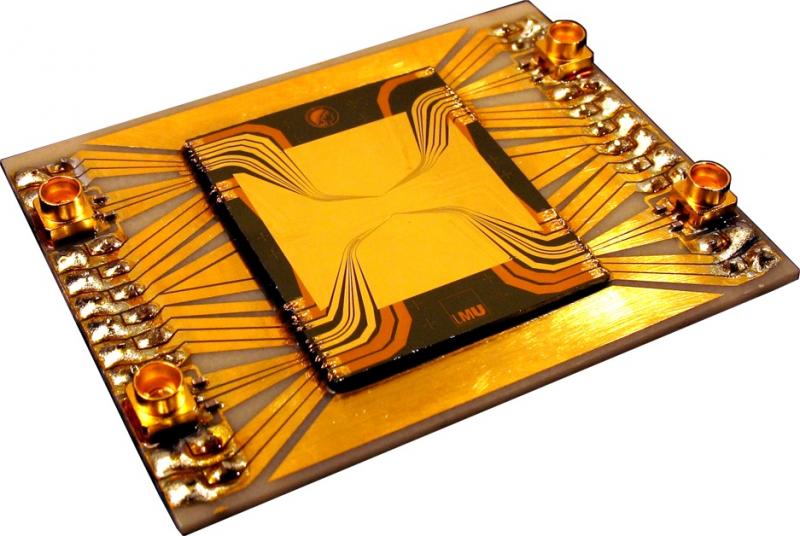Quantum Metrology, Sensing and Imaging
NEST - Scuola Normale Superiore
Wed, 2010-04-07 12:51 - Daniele Binosi- Quantum information
- Nanoscale fabrication
- Electronic transport
- Semiconductor nanostructures
- Normal-superconductor nanostructures
Quantum Optics (Leiden)
Wed, 2010-04-07 12:19 - Daniele Binosi- Photonic entanglement
- SPDC
- Light scattering
- Plasmonics
- Singular optics
- Single Photon Detectors
- Opto-mechanics
Quantum Degenerate gases
Wed, 2010-04-07 11:49 - Daniele Binosi
-
Quantum Degeneracy -
Optical Lattices -
Bose-Fermi mixtures
Quantum Information Team at Telecom ParisTech
Mon, 2010-04-05 16:17 - Romain Alléaume- Practical Quantum Key Distribution: QKD networks (architecture, protocols, topological optimization), practical key distillation, integration into security architectures, Side-channels and security certification of QKD devices
- Theoretical Quantum Cryptography: QKD security proofs, Post-Quantum Security Models (noisy storage...) , Non-QKD Quantum Crypto Prtotocols (secret sharing, etc...), Device-Independent Quantum Crypto
Quantum Optics Group, Universität des Saarlandes, Saarbrücken, Germany
Thu, 2010-04-01 11:31 - Christoph BecherQuantum Optics and Quantum Information
- color centers in diamond
- single-photon sources
- atom-photon interfaces
- cavity QED
- single photon nonlinear optics
Atomic clocks use quantum timekeeping
Wed, 2010-03-31 23:12 - Daniele Binosi| The microcosm, the realm of quantum physics, is ruled by probability and chance. The behaviour of quantum particles cannot be predicted with certainty but only with certain probabilities given by quantum physics. This results in a so-called quantum noise, which fundamentally limits the precision of the most refined atomic clocks and interferometers. The solution to this problem is the use of entangled atomic systems. A break-through has now been achieved by a team around Professor Theodor W. Hänsch and Professor Philipp Treutlein (Ludwig-Maximilians-Universität Munich and Max Planck Institute of Quantum Optics in Garching, Philipp Treutlein is Professor at the Universität Basel since February 2010). For the first time the scientists succeeded in generating multi-particle entanglement on an atom-chip (Nature, Advance Online Publication, DOI: 10.1038/nature08988). This technique opens a way to significantly enhance the precision of chip-based atomic clocks or interferometers and could also form the basis for quantum computers on microchips. The Munich experiments have been carried out in cooperation with theoretical physicists around Dr. Alice Sinatra (ENS, Paris). |
Atom chip with integrated microwave guiding structures used in the Munich experiment. The chip is used for the production of Bose-Einstein condensates, for the operation of chip-based atomic clocks and atom interferometers, and for the generation of spin-squeezed and entangled states of the BEC. Picture: Philipp Treutlein, LMU Munich.
|
Experimental demonstration of a hyper-entangled ten-qubit Schrödinger cat state
Mon, 2010-03-29 10:23 - Lukas TheusslWei-Bo Gao, et. al. Nature Physics March 2010. doi:10.1038/nphys1603
Coherent manipulation of a large number of qubits and the generation of entangled states between them has been an important goal and benchmark in quantum information science, leading to various applications such as measurement-based quantum computing and high-precision quantum metrology. However, the experimental preparation of multiparticle entanglement remains challenging. Using atoms, entangled states of up to eight qubits have been created, and up to six photons have been entangled.
Cavity optomechanics using an optically levitated nanosphere
Sat, 2010-03-27 12:18 - Lukas TheusslProc. Natl. Acad. Sci. USA 107, 1005 (2010)
The authors propose a novel approach to prepare mesoscopic mechanical systems in superposition, or entangled states at room temperatures. A promising setup for the implementation of these ideas consists of levitated nanospheres coupled to high-finesse cavities.
QIon10: Workshop on Quantum Information and Quantum Dynamics in Ion Traps
Fri, 2010-03-26 13:03 - Daniele BinosiAtom chip based generation of entanglement for quantum metrology
Fri, 2010-03-19 12:29 - Daniele BinosiMax F. Riedel, Pascal Böhi, Yun Li, Theodor W. Hänsch, Alice Sinatra, Philipp Treutlein
Nature 464, 1170-1173 (22 April 2010) | doi:10.1038/nature08988
arXiv:1003.1651 [quant-ph] (http://arxiv.org/abs/1003.1651)
Atom chips provide a versatile `quantum laboratory on a microchip' for experiments with ultracold atomic gases. They have been used in experiments on diverse topics such as low-dimensional quantum gases, cavity quantum electrodynamics, atom-surface interactions, and chip-based atomic clocks and interferometers. A severe limitation of atom chips, however, is that techniques to control atomic interactions and to generate entanglement have not been experimentally available so far.


